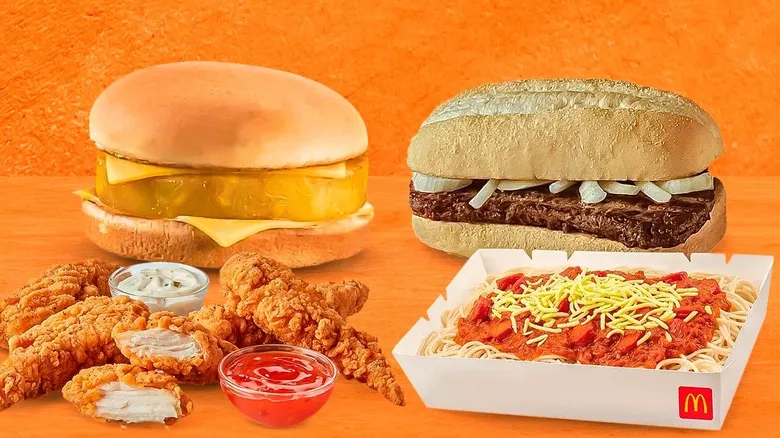McLean Deluxe
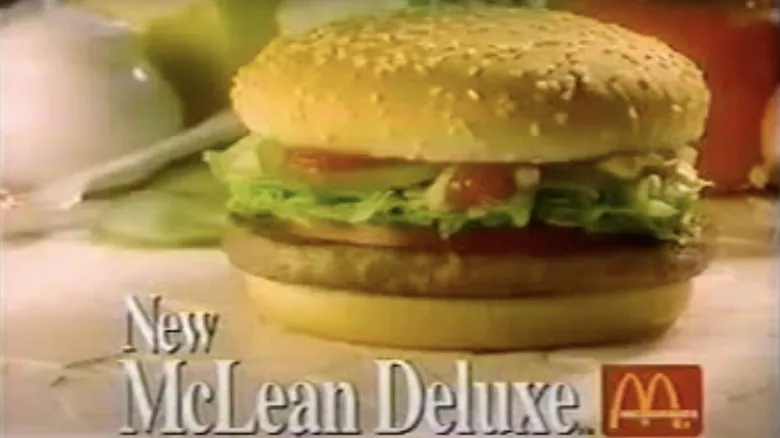
McDonald's is not typically recognized for its health-oriented choices or impressive nutritional content. In fact, the opposite is true, as the chain frequently appears on lists of the unhealthiest fast food options available. Phil Sokolof, a wealthy businessman at the time, certainly concurred. After suffering a heart attack at the age of 43 in 1966, he quickly blamed McDonald's and other fast-food establishments. His highly publicized campaign seemingly led to the introduction of modified recipes that were less appealing and the development of new, healthier menu items.
One such addition was the McLean Deluxe, which was available for five years, from 1991 to 1996. This burger boasted being 91% fat-free thanks to the inclusion of seaweed in the meat. Promoted by professional football player Kevin Greene in commercials, it was surprising that this low-fat option didn’t last longer. A significant factor in its short lifespan was the taste; the reduction in fat resulted in a loss of flavor and a drier texture. Additionally, seaweed was not an appealing selling point due to the presence of carrageenan, an additive with questionable safety. The McLean Deluxe also faced a third hurdle: its price was slightly higher than other McDonald's burgers, contributing to its downfall. However, if you're disappointed that you missed the chance to try this discontinued item, consider opting for a burger made with mushrooms and ground beef as a healthier alternative that still offers reduced fat content.
McSalad Shakers
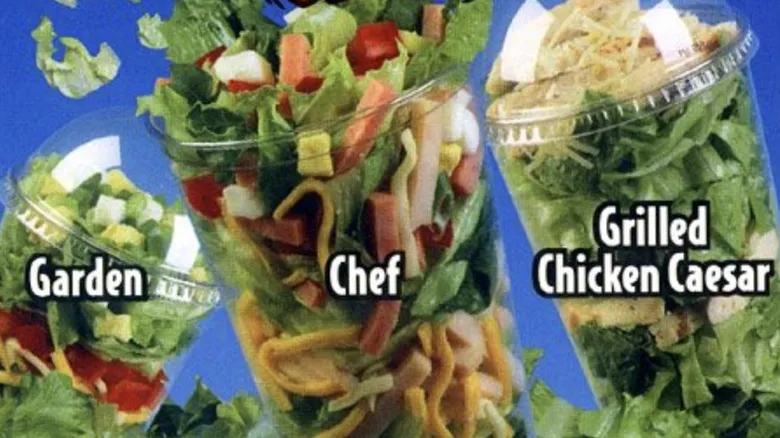
For a fast-food chain known for its burgers and thin fries, McDonald's made a notable effort to offer healthier choices on its menu. They even introduced convenient grab-and-go meals, known as McSalad Shakers. Launched in 2000, these salads were packed into clear plastic cups typically used for cold beverages, making them easy to take on the go.
There were three varieties of these portable Shakers: Chef, Garden, and Grilled Chicken Caesar. Each option featured a mix of greens, with different toppings such as julienne ham, turkey, chicken breast, cheddar and jack cheese, parmesan cheese, chopped tomatoes, and more. Unfortunately, due to poor sales, the product was discontinued just three years after its debut. The McSalad Shakers were quickly replaced in the spring by a new line of premium salads, which included a Grilled Chicken Caesar salad. Fast forward to the COVID-19 pandemic, and salads were completely removed from McDonald's menu.
Fruit N' Yogurt Parfait

McDonald's doesn't appear to have the best track record when it comes to offering healthy options. A prime example is the discontinuation of the Fruit N' Yogurt Parfait, a side dish that featured low-fat yogurt combined with strawberries, blueberries, and granola. This item was a favorite among customers for many years, appreciated for its sweet, refreshing flavor and relatively low calorie count compared to other menu items.
For two decades, the Fruit N' Yogurt Parfait was a staple, but it became one of the many casualties of the coronavirus pandemic. In response to the changing circumstances, McDonald's shifted its focus to drive-thru service, which necessitated a streamlined menu to ensure quick service for customers. Items that were too complicated to prepare were swiftly removed, and the parfait fell into that category. Its preparation took too long and it was primarily considered a breakfast item—an area that McDonald's couldn't prioritize during the pandemic. Although restaurants like McDonald's have since bounced back, there seems to be no indication that the Fruit N' Yogurt Parfait will make a comeback.
Hula Burger
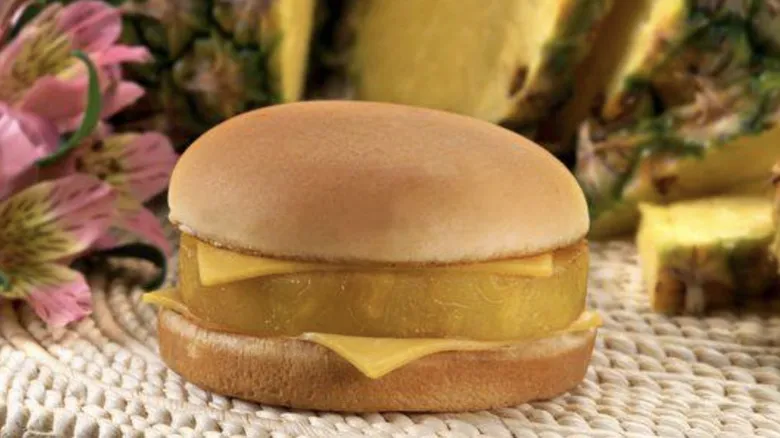
The tale of McDonald's ill-fated Hula Burger is closely linked to the fascinating history of the beloved Filet-o-Fish, a fried fish patty that customers adore. In 1962, a captivating story unfolded as these two items went head-to-head. It all started when Lou Groen, who opened the first McDonald's in the Cincinnati area, noticed that the predominantly Catholic local population was not generating enough sales on Fridays during Lent. Groen's answer to this dilemma was the Filet-o-Fish.
However, McDonald's founder Ray Kroc sought to compete with his own invention: the Hula Burger, which featured a thick slice of grilled pineapple and cheese on a bun. Both items were added to the menu, and whichever one sold better would earn a permanent place in the fast-food chain's offerings. As you might expect, the outcome was clear—the Filet-o-Fish far outperformed the Hula Burger, leaving Kroc's fruity creation in the dust.
Fish McBites
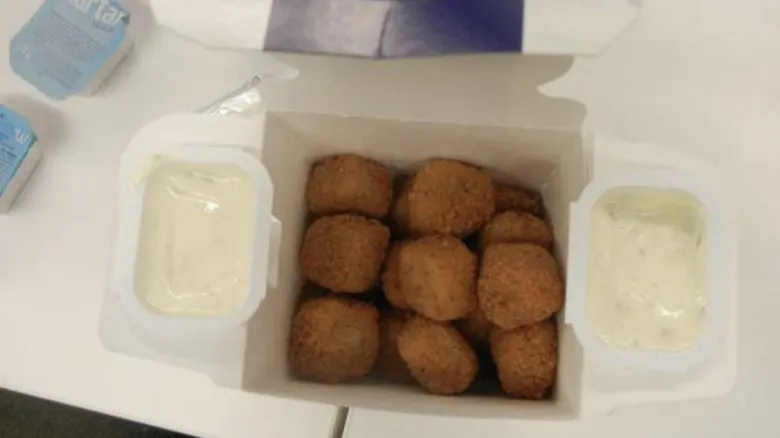
The Filet-o-Fish may currently be McDonald's sole fish-based offering, but that hasn't always been the case. In early 2013, for a brief three-month period, Fish McBites were introduced to the menu to appeal to those observing Lent. This dish featured fried nuggets made from wild-caught Alaskan pollock, a rich source of protein known for its mild taste and tender texture, served with tartar sauce on the side.
However, the public's reaction to this new item was largely lukewarm, mirroring the product's lackluster appeal. Reviews were mixed, but the majority leaned toward the negative. Various media outlets mocked the Fish McBites for failing to lift McDonald's out of its financial difficulties at the time. For instance, NPR's weekly show, "Wait Wait... Don't Tell Me!," made several jokes at the product's expense, including one quip that noted, "They chose the name 'Fish McBites' because 'Cat Food' was already taken." The overwhelming tide of unfavorable reviews ultimately caused the Fish McBites to flop (pun intended).
McCafé Bakery items
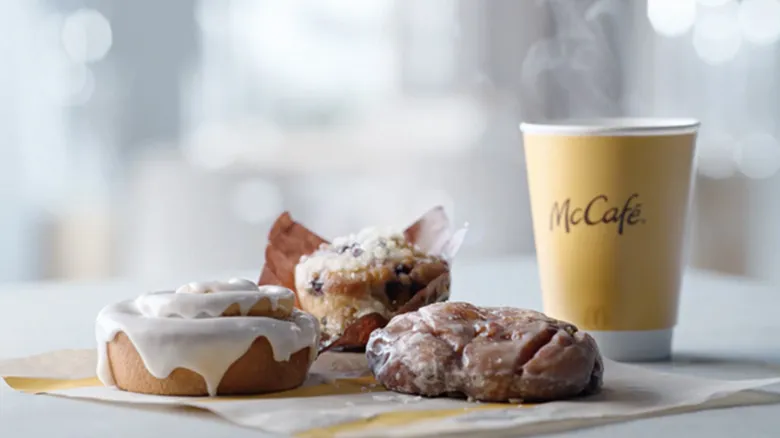
While many cherished items were taken off the McDonald's menu at the beginning of the COVID-19 pandemic, some new offerings were introduced. In October 2020, the McCafé Bakery made its debut, featuring three baked goods: an apple fritter, a blueberry muffin, and a cinnamon roll. These treats were available for purchase all day, although they were initially added to attract more breakfast customers. McDonald's never clearly indicated whether these items achieved that goal. However, considering the company's statement to the New York Post that "We're always listening to our fans and adjusting our menu based on what they crave," it can be inferred that the baked goods may not have met the corporation's expectations, resulting in their removal in 2023.
The decision sparked mixed reactions, with some lamenting the loss of the McCafé Bakery while others were indifferent. A Reddit thread discussing the discontinuation revealed a fairly balanced response from both sides. One user remarked, "I tried all three and had high hopes, but they were all mediocre or terrible." Conversely, another user expressed their fondness for the cinnamon rolls, stating they were "fantastic when microwaved properly. The sauce was incredible; I wish I could get it on its own." Regardless of where you stand, you'll now have to satisfy your sweet cravings with McDonald's apple pies or cookies instead.
Chopped Beefsteak Sandwich

For an irresistibly catchy jingle that will stick in your mind, look no further than the commercials for McDonald's 1979 Chopped Beefsteak Sandwich. This hearty dish featured a tune crafted specifically for its ads, clearly outlining what diners could anticipate with each bite: a patty made from 100% pure, grilled beef, topped with onions, all nestled in a toasted French roll. Most importantly, it came with a special steak sauce on the side. The sandwich was available after 4 p.m. at select locations.
Unfortunately, the item didn't stick around for long. It was on the menu for just one year before being discontinued. This was likely due to its relatively higher price compared to other McDonald's burgers at the time—a recurring issue that continues to affect menu offerings as beef prices rise. It's a real disappointment, especially considering the fondness the Chopped Beefsteak Sandwich garnered. Even a year ago, customers were still leaving comments on the product's commercial videos on YouTube. One nostalgic fan remarked, "The meat was of higher quality and had a fantastic texture. Plus, the sauce was amazing. I could never figure out why they didn't keep it around."
Onion Nuggets
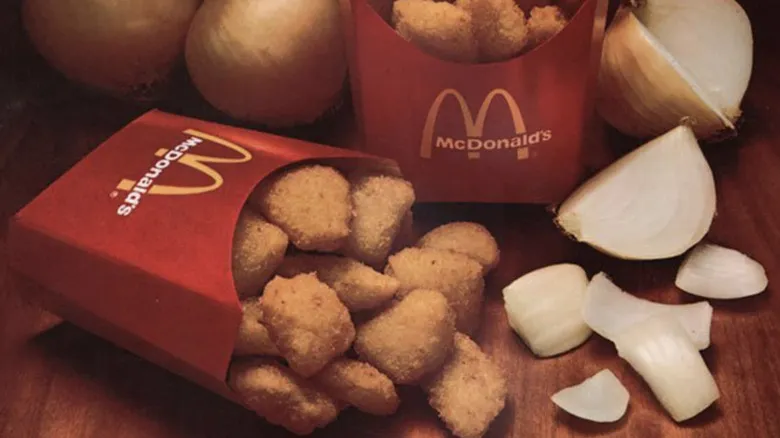
In a list ranking fast food nuggets and tenders, McNuggets consistently secure a top position. Introduced in 1983, they have garnered a devoted fan base ever since. Interestingly, the creation of one of McDonald's most popular items can be traced back to the discontinuation of another: Onion Nuggets.
For a brief period from 1978 to 1979, the chain offered deep-fried onion pieces, coated in a crispy, golden crust. These were often marketed alongside the Chopped Beefsteak Sandwich. While similar onion-based snacks thrive at fairs and carnivals today, they failed to gain traction at McDonald's during that time. In a pivotal meeting between Fred Turner, the then-chairman of McDonald's, and chef Rene Arend, the idea was proposed to switch to chicken instead. The rest is history, and we can now thank the unfortunate fate of Onion Nuggets for the beloved Chicken McNuggets and their signature dipping sauces.
Chicken Selects
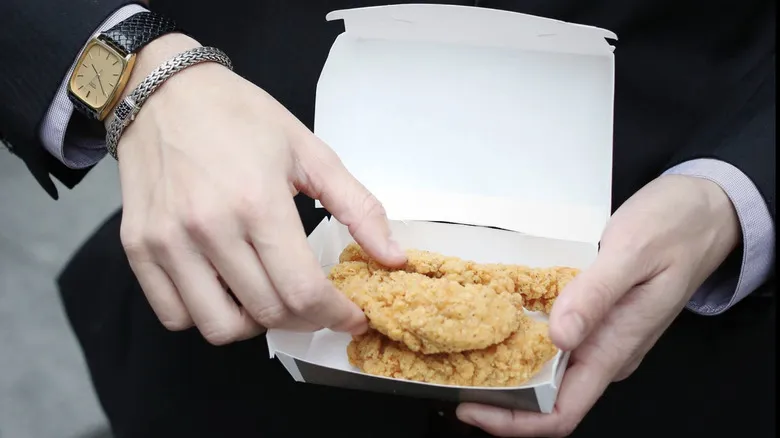
Despite the immense popularity of Chicken McNuggets, McDonald's introduced a longer version of these bites known as Chicken Selects. These were essentially strips of chicken breast coated in batter and fried. While no chicken item has matched the enduring success of McNuggets, which have been a staple on the menu for decades, Chicken Selects also gained recognition, remaining available from 2004 until 2013.
Just four years later, they returned to the menu under the new name Buttermilk Crispy Tenders. The dish quickly became a hit, leading McDonald's to temporarily pause its availability due to demand exceeding expectations. Customers were drawn to the strips for several reasons. Business Insider praised them as "an impressively moist tender wrapped in a delightful crunchy coating. The ratio of white-meat chicken to breading is well-balanced ... While the little specks of pepper in the breading suggest spice, the overall experience is rich enough that it doesn't require it." However, like many other items on this list, the Buttermilk Crispy Tenders were ultimately removed from the menu during the pandemic.
McPizza

Pizza is always an appealing choice. It's a timeless comfort food that numerous fast-food chains, like Pizza Hut and Domino's, have successfully marketed. However, McDonald's has not shared in that success. The chain introduced McPizza in the late '80s as a family-sized option, which later shrank to individual-sized servings. Despite this adjustment, the cooking time remained too lengthy for McDonald's standards.
By 2000, McPizza was discontinued at all but three locations: in Ohio, West Virginia, and Florida. At these restaurants, customers could order either family or individual pizzas with a range of toppings, including plain, pepperoni, mushroom, sausage, and more. However, in 2017, corporate decisions led to the closure of two of those locations, leaving only the Florida store operational. Now, the Orlando restaurant is the last place where those yearning for a McPizza can satisfy their cravings.
McHotDog
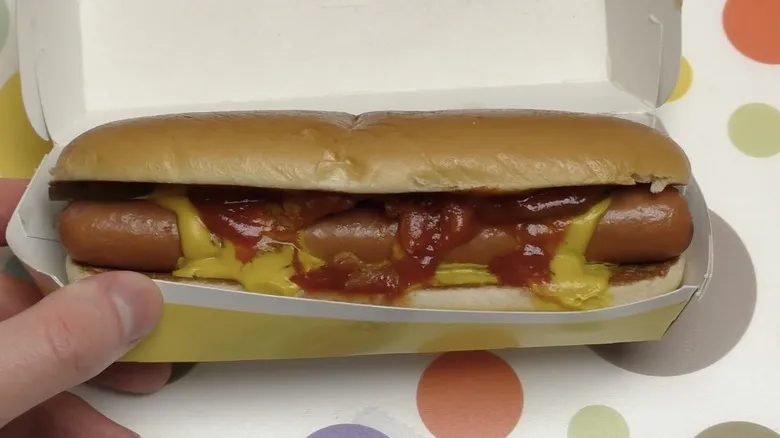
After venturing into burgers, pizza, and various chicken offerings, McDonald's only needed to add hot dogs to complete its all-American menu. This became a reality in the summer of 1995 with the introduction of McHotDogs. These grilled beef hot dogs were topped with relish and onions, all nestled in a toasted bun. However, they were short-lived, disappearing after just a few years in the '90s. In 2002, they made a comeback as a seasonal summer item and have been available intermittently since then. Recently, though, there have been no signs of a revival, and it appears unlikely that they will return.
Bringing McHotDogs back permanently would be challenging, especially considering that Ray Kroc, the founder, voiced his disapproval from the outset. In his autobiography, "Grinding It Out: The Making of McDonald's," Kroc noted that hot dogs didn't fit with McDonald's brand image. He remarked (via EconoTimes), "There's no telling what's inside a hot dog's skin, and our standard of quality just wouldn't allow for that kind of product." It's hard to argue with his perspective, particularly given that many hot dog brands use subpar ingredients.
McSpaghetti
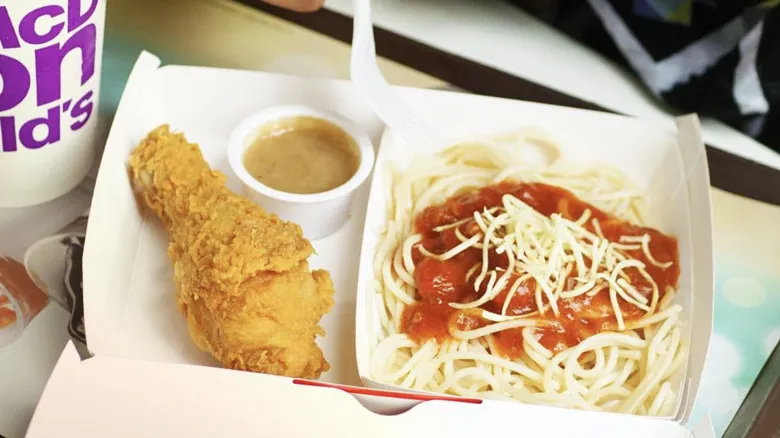
Given the numerous American menu items that McDonald's has experimented with and ultimately discarded, it was only a matter of time before the company ventured into a completely different cuisine. Enter the McSpaghetti, which made its debut in the 1970s alongside a few other Italian pasta dishes. The noodles, generously coated in marinara sauce and accompanied by optional meatballs, were served with garlic bread in a white foam takeout container. However, despite the widespread affection for spaghetti, the dish failed to gain traction and was phased out in all but two locations due to challenges with sourcing ingredients and equipment, as well as customer frustration over the lengthy preparation time. After all, spaghetti isn't typically associated with fast food.
The exception to this is the Philippines, one of the few places where the McSpaghetti has managed to endure. This isn't too surprising, considering the Southeast Asian nation is home to Jollibee, a global fast-food chain known for its burgers and spaghetti. In the Philippines, the McSpaghetti features a sweetened twist, made with banana ketchup and sliced hot dogs. This version differs from the one available at the only American location still offering the dish, which is a franchise in Orlando, Florida, known as the World's Largest Entertainment McDonald's. In addition to the McSpaghetti, this location is reputed to offer a variety of other quirky items not found at typical McDonald's restaurants.
Recommended

How Kosher Hot Dogs Became Widely Popular

Ever Wonder Why There's A Section At Texas Roadhouse Dedicated To Willie Nelson?
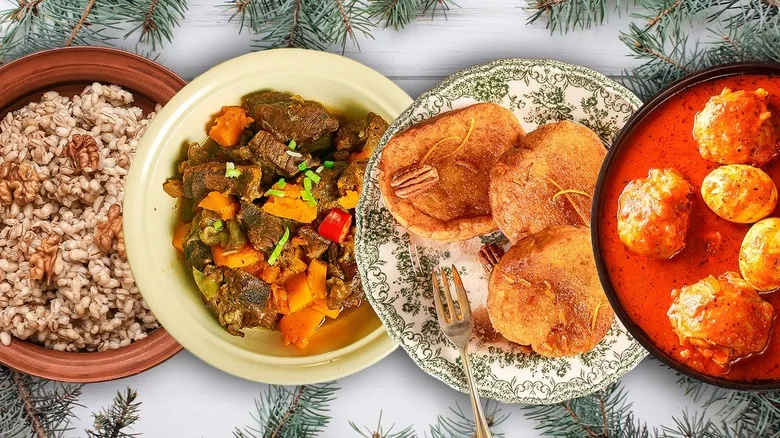
20 Traditional Christmas Dishes From Around The World
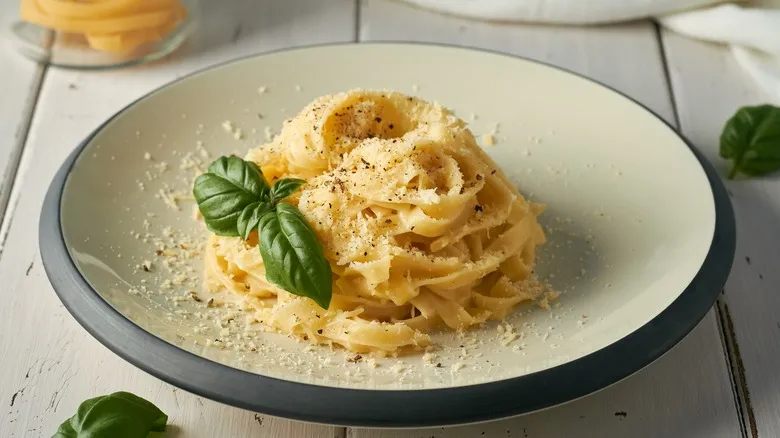
The Famous Hollywood Couple Who Introduced The US To Fettuccine Alfredo
Next up

